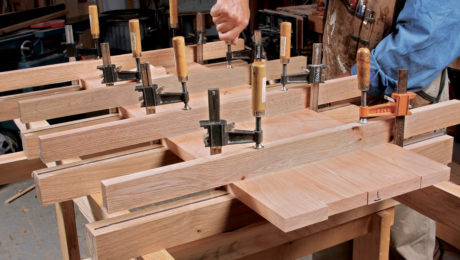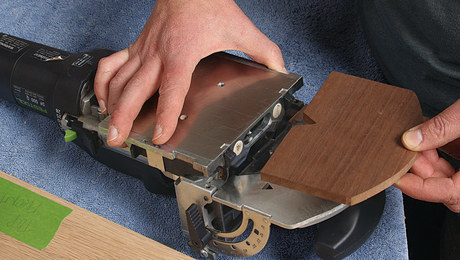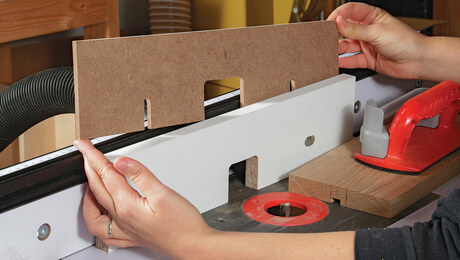STL257: Barry gets a table saw
Anissa, Barry, and Ben discuss budget tablesaws, milling a bench top by hand, mobile bases, and finer furniture padsThis episode is sponsored by Peters Valley
Question 1:
From Jon:
I just recently found the podcast and have been working my way through (and thoroughly enjoying) the back catalog. A lot of it goes over my head as I am still very much a beginner but I feel like I am learning a lot for all of you. I have sought out the many episodes discussing what table saw is right for a beginner and if a job site saw is worth it or not and the the same for buying an old contractor saw with a terrible fence that requires hitting it with a hammer. Though, I found that one about three weeks too late. Which leaves me in my current predicament and with my questions for you. In 2020 I bought a Dewalt Jobsite saw. I haven’t used it much because it is so bad and so inaccurate I could never get could square or straight cuts. I finally built a an outfield table and modified the fence to be longer. It was a little better but not much. About a month ago I bought an old Delta contractor saw. It seemed great but the fence definitely required a mallet and a lot more patience than I have. I almost bought a Vega fence but I couldn’t bring myself to spend more on the fence than the saw. I bought the Kreg precision band saw fence and used a 4’ piece of extruded aluminum. It works pretty well but has some deflections and I am not getting a clean cut. I am going to try adding some support in the form of some mdf and see if that gives it enough stability. Anyway, long story too long, am I better off dealing with what I have or buying a hybrid Grizzly or Laguna F1. Ultimately I want a saw stop but I feel like I should get either the contractor or professional in the 36” right cut. I can’t decided if it is worth waiting until I can afford a good saw with a really good fence as my frustrations have been with accuracy or just settling and getting the grizzly, Laguna or a sawstop with a lesser fence. I also bought myself a Makita Track saw and have thought about trying to set up an MFT table top but that seems like it will end up being as expensive as anything else. Sorry for the long winded question. I just always prefer too much information to too little. Thanks keep up the good work and great content. Can’t wait to see what you do in the new shop.
Question 2:
From Chris:
I have officially run out of floor space in my shop. I just bought a scroll saw on Craigslist, and I have nowhere to store it. I am thinking about making a cabinet style base out of plywood for my band saw, and putting a shelf in there to store the scroll saw when not in use.
My bandsaw is the standard Grizzly “Ultimate 14″ bandsaw” and has the included base, modeled off the old Deltas. It is crazy heavy, and I’m wondering if there is a construction method with a relatively small footprint that could support the weight. Would vibration be worse on a plywood box than the current metal stand? I’d still like the whole thing to be mobile, and I’d be fine buying nice casters or a different mobile base to make it work.
Segments:
Barry- Bowed caul
 |
How to Make Cambered Cauls |
Anissa – spacers for all the things!
 |
Get perfect reveals with a Domino |
 |
Build an adjustable router-table fence |
Ben – All-time favorite tool – The Veritas pocket plane
Question 3:
From Jake:
I know Anissa has spoken on an old episode about seeing woodworking parallels in non-woodworking real world scenarios. you guys asked to share any if we had some so i though id share that i just had to explain to my wife that the rows left from the lawn mower alternate light and dark (based on which way i pushed) because of the chatoyance of the grass, and that i have to cut the rows parallel to the street otherwise if it was perpendicular to the street youd see the “end grain” when looking from the street, and no one wants to see endgrain…these made perfect sense in my head but when i said them out loud i sounded crazy.
Here’s a question, i find that i spend months and months on a piece of what i like to think is fine furniture, but then throw some crappy stick on footpads on the bottom so the piece doesn’t scratch the floor. best case scenario i get the plastic ones with a spike in the middle to go in the endgrain bottom of the leg of the piece. is there a “finer” version that i dont know about? maybe people make them our of what? i guess what I’m asking is what do you guys, or the fine furniture makers yore, put on the bottom of furniture to prevent scuffing?
Question 4:
From Bob:
I have another planing question. I’m planning on building a better work bench than I now have. I want to laminate the top. Most instructions direct the use of a jointer and player which I don’t have. They usually say to glue it up in sections, flatten the sections, then glue the sections together. Since I’ll be hand planing the top, is there any benefit to doing it in sections rather than gluing it all up and planing the whole top at once?
Every two weeks, a team of Fine Woodworking staffers answers questions from readers on Shop Talk Live, Fine Woodworking‘s biweekly podcast. Send your woodworking questions to shoptalk@taunton.com for consideration in the regular broadcast! Our continued existence relies upon listener support. So if you enjoy the show, be sure to leave us a five-star rating and maybe even a nice comment on our iTunes page.




















Comments
I would probably put the small workbench some where else in my house. Basement? Garage? Back porch?
Table saw? More like table aww, amiright?
“[Deleted]”
Regarding pads on the bottom of furniture, I've used 3/8" thick slices of wine bottle corks glued into a shallow whole drilled with a Forstner bit. I haven't tried it on furniture that is moved frequently (i.e. chairs), but seems to work well for my needs.
Rather than hand plane or power plane a workbench top, why not use a router in a slab flattening jig. I made the Nick Offerman version featured in issue #222. I plan to attach it to my workbench when it comes time to clean up my top.
I bought my workbench top from McMaster-Carr. It is 2 1/4 inch thick hard maple and intended for the food industry. It is laminated from many shorter pieces. Some pieces are dished about 1/32 inch from final sanding. That has not mattered. Tops come as big as 3 ft. by 10 ft. I would do it again in an instant.
Barry might consider a Rikon 10 inch bandsaw. They are small and relatively light but will do most of the bandsaw cuts he is likely to need. The only limitations are wide rips and wide resaws. My son has limited space and loves his 10 inch Rikon.
You read my mind with that bandsaw. I've been eyeing it hard since Rollie Johnson reviewed it (https://www.finewoodworking.com/2019/11/12/tool-review-rikon-10-306-bandsaw). Glad to hear your son digs it too.
I recently started listening to your podcast and I love the show. I feel like I am hanging out with you in the shop shooting the breeze. I also find I am learning so many tips that are not always in FWW articles because it is just an off-hand comment or just how one of your approaches a particular problem. Btw angular momentum is the word you are looking for to describe a bandsaw.
Regarding question #1
I agree with Ben, a riving knife is an absolute requirement. When I bought my first table saw 10 years ago, there were not many models that included a riving knife as in integral part of the saw in the US market - Sawstop was the main one. Today there are many good quality table saws that include the riving knife, so the final purchase decision will come down to other factors.
If you are comparing a Sawstop contractor saw with the Sawstop cabinet saw, I would recommend the cabinet saw (PCS). Ten years ago I tried to save some money by buying the contractor saw and upgrading it with options to make it closer to a cabinet saw. I added cast iron wings, the 36" professional fence, and a dust collection port. It is a fine saw, but I regret my decision - in the end the price difference after the upgrades is not much less than the standard cabinet saw and it's still not a cabinet saw. For me the key issue is the alignment of the trunnion with the table. You can find articles in FWW that discuss the difference in trunnion alignment for each saw; cabinet saws allow better trunnion/blade alignment with the table than the contractor saw. If Sawstop is your choice, then I recommend the 1.75hp 36" cabinet saw with the t-glide fence.
Regarding jobsite/contractor/cabinet saws and the fence.
My shop space is shared and I needed a saw I could put away when it’s not in use.
I bought a SawStop jobsite saw and have found it’s fence to be quite good. I was able to make extremely fine fence position changes by putting feeler gauges between the fence and a heavy block (machinists 2”/4”/6” block). Then unlock the fence, remove the feeler gauge, gently press the fence against the block, lock the fence. That way I moved the fence over the thickness of the feeler gauge.
I was able to do fine jointery for the attached table and chairs using that method.
If someone finds the SawStop JobSite saw is best for them but they are concerned about the fence, don’t be. I’m sure there are nicer fences, but you’ll be able to do very good work with this one.
Regarding the last question, I believe you could buy two premade workbench tops at around 1 1/4 in. thick and laminate them to produce a bench top at 2.5 in. or so thick. (Might need to plane finish off the mating surfaces first.) It should be possible to use screws to hold the two pieces together during glue up. The screws could then be removed. I haven't used this technique (which I believe I learned from a FW video by Asa C.) on hardwood, but it worked great for me for laminating MDF 2'x4' pieces for the same purpose.
Log in or create an account to post a comment.
Sign up Log in